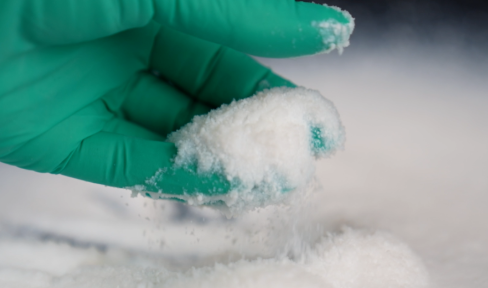Welcome to the official website of Hubei ZhengJiu New Materials Technology Co., Ltd.!
Top 5 Advantages of Fumed Silica in Adhesive Applications
2025-06-21
Top 5 Advantages of Fumed Silica in Adhesive Applications

Fumed silica is a novel inorganic nanomaterial. It is an amorphous silica ultrafine powder obtained by the gas-phase hydrolysis of silicon halides at high temperatures. It has Odorless 、 Tasteless 、 Non-toxic , High purity 、 Large specific surface area 、 Chemically stable etc. In adhesive and sealant applications, it is used as a performance-enhancing and improving additive to provide thickening thixotropy, enhanced mechanical properties, rheological adjustment, anti-settling, improved temperature resistance, and storage stability. Therefore, it has significant advantages in adhesive applications, which stem from its unique physicochemical properties and provide significant impetus to the development of the adhesive and sealant industry.
1. Excellent thickening thixotropy
Thickening thixotropy is crucial for adhesives, facilitating easy coating and dispensing during application and preventing sagging during curing and standing. This is due to fumed silica forming a three-dimensional network structure in the adhesive, imparting thixotropy (shear thinning) to the system. This results in good fluidity during application and anti-sagging properties when stationary, suitable for vertical surfaces or complex structures. Simultaneously, it significantly increases the system viscosity, preventing pigment and filler sedimentation and accumulation.
2. Good mechanical reinforcement
Fumed silica has a small primary particle size (7-40 nm), and the aggregate particle size is generally 100-300 nm. It has a large specific surface area and a large number of silanol groups on its surface, allowing it to penetrate the gaps between the polymer chains of the substrate and the adhesive film, filling the interior of the matrix. Simultaneously, Fumed silica particles and polymer molecules 、 silica molecules form tight bonds through hydrogen bonds or van der Waals forces, creating strong interactions. This improves the tensile strength, tear strength, and wear resistance of the adhesive, enhances the bonding force between the adhesive and the adherend, and improves the reliability, durability, and overall structural stability of the bond.
3. Excellent anti-sagging and anti-settling properties
Fumed silica increases the viscosity and yield value of the adhesive, effectively preventing sagging and collapse during the curing process, ensuring the accuracy and stability of the bonding. In high-filler systems, fumed silica prevents or slows down the settling of pigments and fillers, forming a stable and uniform suspension and preventing sedimentation and layering during storage, extending the shelf life of the adhesive and ensuring consistent performance during use.
4. Good weather resistance and thermal stability
Fumed silica is a highly thermally stable inorganic compound that can withstand temperatures as high as 1300℃ . This high-temperature resistance stems from its very stable crystal structure and chemical bonding. Therefore, fumed silica enhances the heat resistance and weather resistance of the adhesive, allowing it to maintain good performance in various harsh environments (such as high temperature, low temperature, humidity, dryness, etc.).
5. Excellent transparency maintenance
Adhesives and sealants are mostly gray-brown or transparent colloids. In some adhesives with high transparency requirements, fumed silica can maintain the ideal transparency of the adhesive without affecting its transparency or changing the original color, while providing thickening and reinforcement, giving the adhesive both good optical properties and excellent application and bonding performance.
6. Why is fumed silica so excellent in adhesive applications?
First, its nano size effect and high specific surface area . After being fully dispersed in the adhesive, fumed silica typically has a nano-scale particle size and a huge specific surface area, allowing it to fully contact and interact with the polymer chains in the adhesive. Through physical adsorption and chemical bonding, it forms a unique network structure, effectively restricting the movement of the molecular chains, thus achieving thickening, thixotropy, and reinforcement.
Secondly, through surface modification and hydrophobization treatment (such as grafting organosilicon alkane), its compatibility with different adhesive matrices (epoxy, polyurethane, acrylic, etc.) can be adjusted, and its dispersibility can be optimized.
Furthermore, through physical filling and reinforcement, nanoparticles can fill the pores in the matrix, reduce stress concentration, and transfer loads through interfacial interactions, improving mechanical properties.
These advantages not only solve the performance bottlenecks of traditional adhesive sealants but also promote the industry's upgrading towards high-end, environmentally friendly, and intelligent directions. They provide key material support for strategic industries such as new energy, electronic information, automobile manufacturing, and aerospace, enabling the development of more high-performance and multifunctional adhesive products and further unleashing the application potential of the industry.



